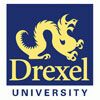
What are the top Game Design BAs?
| Ranking | School | State |
|---|---|---|
| 1 | University of Southern California | California |
| 2 | DigiPen Institute of Technology | Washington |
| 3 | University of California, Santa Cruz | California |
| 4 | University of Central Florida + FIA | Florida |
| 5 | Savannah College of Art and Design | Georgia |
| 6 | Michigan State University | Michigan |
| 7 | Drexel University | Pennsylvania |
| 8 | University of California Los Angeles | California |
| 9 | University of Texas at Dallas | Texas |
| 10 | Columbia College Chicago | Illinois |
| 11 | Worcester Polytechnic Institute | Massachusetts |
| 12 | University of Wisconsin – Whitewater | Wisconsin |
| 13 | Otis College of Art and Design | California |
| 14 | University of Denver | Colorado |
| 15 | Becker College | Massachusetts |
| 16 | Miami University | Ohio |
| 17 | Cogswell Polytechnical College | California |
| 18 | University of Florida | Florida |
| 19 | University of Advancing Technology | Arizona |
| 20 | Stevens Institute of Technology | New Jersey |
| 21 | University of Hawaii at Manoa | Hawaii |
| 22 | Bradley University | Illinois |
| 23 | University of Connecticut | Connecticut |
| 24 | Webster University | Missouri |
| 25 | The College of New Jersey | New Jersey |
For our undergraduate degree rankings, we have evaluated game design schools and programs with the best Bachelor of Arts (BA), Bachelor of Fine Arts (BFA), and Bachelor of Science (BS) options. To determine which degree matches your career goals, it is important to understand how each qualification differs.
The Bachelor of Arts (BA) degree is the principal liberal arts degree. Most BA programs require 30-some or 40-some credits, which leaves plenty of flexibility in the form of free electives. BA students can use the free electives to sample widely from other course offerings or to earn an additional credential (a second major, a minor, or some combination of additional credentials).
The Bachelor of Science (BS) degree is offered in areas such as Computer Science, Mathematics, Psychology, Statistics, and each of the natural sciences. The BS is best suited to the student who wants to focus more on courses in the major and on 'collateral' courses (like chemistry or mathematics for a major in Geological Sciences) and is willing to give up some of the flexibility of the BA in return for the greater focus.
The Bachelor of Fine Arts (BFA) degree is considered the most prestigious bachelor's degree that you can receive in the visual arts. This option is for students who wish to gain as much experience and skill in the arts as possible.
Below are the Top 25 Schools and Colleges with Game Design BA Programs for 2019.
 1. University of Southern California, Los Angeles, California
1. University of Southern California, Los Angeles, California
University of Southern California (USC) is home to the Dornsife College of Letters, Arts & Sciences, which houses the Interactive Media & Games Division. Dornsife programs are offered in conjunction with the School of Cinematic Arts. Per the school, the Interactive Media & Games Division offers a BA in Interactive Entertainment along with an extensive list of Minors “for students who would like to add an expertise in one of the various aspects of games alongside their major field of study.”
Options include Game Design, Game Animation, Game Audio, Game Entrepreneurism, Game User Research, Themed Entertainment, Video Game Design and Management, Video Game Programming, 3D Computer Modeling and Graphics, and Computer Science.
Per the school, the BA program “combines a broad liberal arts background with specialization in the design of games and interactive entertainment.” Students in the program will “make games at all levels, gaining hands-on skills across a range of digital media arts.”
“The core game design education allows students the space within their education to earn multiple specializations within the industry, broadening their skill sets and post-education trajectory. Hands-on skills are taught within a vibrant community of thought that explores new models of interactivity as well as emerging markets and platforms for playful media. Emphasis is placed on collaboration, team-building, innovation and creative leadership.”
Another highlight of the program is access to USC’s GamePipe Laboratory. Sponsored by Intel, Sony, and other technology companies, the Lab produces a "Demo Day," which allows students to showcase their work. The semiannual event attracts game industry reps, reporters, faculty, students, and hundreds of spectators from across the country.
 2. DigiPen Institute of Technology, Redmond, Washington
2. DigiPen Institute of Technology, Redmond, Washington
DigiPen Institute of Technology houses the Department of Game Software Design and Production, which offers a BA in Game Design. Per the school, the program will help students “create compelling interactive systems — from sophisticated user interfaces to polished games and applications.” In addition to extensive design coursework, students will “delve deep into psychology, communications, and user experience with an eye for crafting powerful experiences.” Students in the program will design original games and applications, learn how to rapidly prototype ideas, and “study human behavior from a variety of lenses.”
The program covers topics such as game mechanics, user experience design, user research and testing, and 2D and 3D level design. Coursework also covers cognitive psychology, scripting languages, economics, and communications, as well as a sampling of courses involving math, art, music, and basic computer science as they relate to the work of professional designers. Students also will collaborate with peer and across disciplines on a series of semester- and year-long game projects. DigiPen student games have won 57 Independent Games Festival awards (more than any other school) and to date, more than 550 companies around the world have hired DigiPen graduates. DigiPen alumni have also been credited on more than 1,000 commercial game titles.
 3. University of California, Santa Cruz, Santa Cruz, California
3. University of California, Santa Cruz, Santa Cruz, California
The University of California - Santa Cruz (UCSC) Art Department houses the Arts Division, which offers an interdisciplinary BA in Art & Design: Games & Playable Media (AGPM). Per the school, the program is closely affiliated with the BS in Computer Science: Computer Game Design in the School of Engineering. “Students in both programs work together throughout their studies at UCSC, from foundation courses to a year-long capstone sequence that results in team creation of a releasable game.”
AGPM students will earn a degree “focused on the design of game systems and other interactive experiences, including their connection to a wider arts context — with a full grounding in the fundamentals of artistic practice and expressive game development.”
“The foundation of the program is game making,” with students in both programs “working together to make games each year. Students also learn about the history of games, the interpretation of games and game culture, expression of ideas and creating experiences through games, and approaches to design, communication, teamwork, and artistic innovation.”
All students have access to the AGPM Game Lab and study and research opportunities through the Digital Arts Research Center (DARC) and The Center for Games and Playable Media (CGPM). The AGPM Game Lab is located within the DARC and serves multiple functions. The lab is a modular/dynamic space that can be used as a classroom, co-working space, and prototyping studio.
DARC is a multimedia complex housing extensive digital printmaking/photography facilities, faculty studios, and exhibition/media labs. Established in 2010, CGPM houses the schools five games-related research labs including the Expressive Intelligence Studio — one of the largest technical game research groups in the world. CGPM partners include eBay, Google, Sony, EA, Microsoft Studios, the MacArthur Foundation, the Defense Advanced Research Projects Agency (DARPA), and many others.
Graduates of the Game Program at UCSC are prepared to seek positions such as 2D / 3D Artist, Game Designer, Game Programmer, Game Writer, Producer, Sound Designer, User Interface (UI) Designer, User Experience (UX) Designer, and many others.
 4. University of Central Florida + Florida Interactive Academy, Orlando, Florida
4. University of Central Florida + Florida Interactive Academy, Orlando, Florida
The Game Design Program at Florida Interactive Entertainment Academy (FIEA) is one of the largest programs at the University of Central Florida (UCF). Per the school, the Academy opened its doors to “a select group of future game developers and creators” in August of 2005. Today, FIEA serves dozens of students enrolled in a variety of game design programs.
A BA in Digital Media with a Specialization in Game Design is available through the College of Arts and Humanities, Games & Interactive Media Department. The program "allows students to integrate the multiple domains of art, storytelling, and technology." In the Game Design Track, students "learn the history, design cultural impact and implementation of video games and video game technologies." Students will complete courses that will allow them to "build a series of prototype, casual and longer form games throughout the semester as individuals and in teams."
Other program highlights include the opportunity to participate in game jams and meet-ups, which offer networking opportunities and possible job placement.
 5. Savannah College of Art and Design, Savannah, Georgia
5. Savannah College of Art and Design, Savannah, Georgia
Savannah College of Art and Design (SCAD) offers a BA with a Concentration in Interactive Design. Students in the program may add a Minor to enhance the degree. Options include Concept Art for Games, Concept Design for Animation and Games, Games UX, Interactive Design and Game Development, and Mobile and Interactive Design.
The BA requires 180 credit hours of study with 45 credit hours in the Concentration. Course highlights include Digital Design Aesthetics, Core Principles: Programming, Introduction to Game Design, Core Principles: Interactive Design and Typography I: Anatomy, Form and Space.
Available at the Savannah, Atlanta, and eLearning campuses, the BA program at SCAD offers the opportunity to meet with professionals every quarter.
These visiting professionals from the industry interview students for positions and review portfolios. Recent visitors include representatives from Zynga, Blizzard Entertainment, Electronic Arts, Crystal Dynamics and Activision. Graduates have been recruited by Epic Games, Sucker Punch Productions, Firaxis Games, and many others.
 6. Michigan State University, East Lansing, Michigan
6. Michigan State University, East Lansing, Michigan
Michigan State University (MSU) houses the College of Communication Arts and Sciences’ Media and Information (MI) Department, which is home of the Game Design and Development Program. Founded in 2005, the program offers a BA in Media and Information with a Game and Interactive Media Design Specialization and a BA in Studio Art with a Game Design and Development Specialization. The Specialization is also available to other majors “on a case-by-case basis, particularly those in the Honors College.
Students in all programs have access to the College of Communication Arts and Sciences’ Games for Entertainment and Learning (GEL) Lab. Per the school, the mission of the GEL Lab is to “design innovative prototypes, techniques, and complete games for entertainment and learning and to advance state of the art knowledge about social and individual effects of digital games.”
With a 97.6% job placement rate (2015), MSU graduates have gone on to land positions at companies such as Facebook, Electronic Arts, ESPN, CBS, Discovery, WILX, Rockstar Games, Quicken Loans, GE, Ford, Liquid Web, TechSmith, and Volition, to name but a few.
 7. Drexel University, Philadelphia, Pennsylvania
7. Drexel University, Philadelphia, Pennsylvania
Drexel University’s College of Computing & Informatics offers a BA in Computer Science (BACS) with a Concentration in Game Programming and Development (GMPD). Per the school, the Game Programming and Development Concentration “provides conceptual understanding of game design and practical experience in the design and the development of games.” Courses cover fundamentals of game design and development, large-scale game development, and special topics in educational and experimental game design.
Students in the BACS program will benefit from Drexel’s Cooperative Education Program. Founded in 1919, the program was one of the first of its kind, and it “continues to be among the largest and most renowned.” Drexel Co-op, which allows students to test drive careers, network and gain experience before graduation, offers access to more than 1,700 employers in 35 states and 45 international locations. Students may also opt to conduct independent search.
Students in the BACS program can participate in a four-year, one co-op program or a five-year three co-op program.
All students have access to Drexel Game Design and the RePlay Lab. DGD and RePlay are collaborative efforts between the Digital Media program (in the Westphal College of Media Arts & Design) and the Computer Science department (in the College of Computing and Informatics).
 8. University of California Los Angeles, Los Angeles, California
8. University of California Los Angeles, Los Angeles, California
University of California Los Angeles (UCLA) houses the School of Arts and Architecture, home to the Department of Design Media Arts (DMA), which offers a BA in Design Media Arts (BA DMA). UCLA Extension offers a Game Design Specialization as well. The BA DMA program highlights game design study, interactivity and games, video and animation, visual communication, and more, while the Game Design Specialization consists of four courses including User Experience for Games, AR/MR/VR for Immersive Content: Experience, Game & Media, Introduction to Game Design and 3D Game Design and Game Engines: Unity.
With support from the School of Theater, Film, and Television, DMA also houses the UCLA Game Lab. Per the school, the primary function of the Lab is as “a research and production space for collaborative teams to pursue focused work on gaming projects.” It supports exploration of Game Aesthetics, Game Context, and Game Genres, while emphasizing the “conceptual risk-taking and development of new modes of expression and form through gaming.”
In addition to producing games and research, the lab functions as a center that develops public programming around critical issues in gaming. Programming includes public lectures, workshops, exhibitions, a visiting artist program, and an annual public festival at the Hammer Museum.
 9. University of Texas at Dallas, Dallas, Texas
9. University of Texas at Dallas, Dallas, Texas
The University of Texas at Dallas (UT Dallas) houses the School of Arts, Technology, and Emerging Communication (ATEC). Created in 2015, ATEC merged two long-running programs at UT Dallas: the program in Arts and Technology and the program in Emerging Media and Communication. Today, the School serves more than 1,800 students in bachelor’s, master’s and doctoral programs.
Undergraduate programs include a BA in Arts, Technology, and Emerging Communication (BA ATEC). Undergraduates may choose between several pathways such as Game Design, Animation or Design & Production. BA ATEC students may also choose electives in more than one area. Examples include User Experience Design for Games, Game Design, Interaction Design, Level Design, Modeling and Texturing, Virtual Environments, Rigging, Game Production Lab, Game Pipeline Methodologies, Serious Games, Game Production Lab, Interactive Narrative, and Educational Games.
Per the school, the Games Pathway “introduces students to game development and production and also to critical game studies. Game development and production courses use a collaborative approach to solving problems using both artistic processes and computational skills. Critical game studies courses analyze the social and technological aspects of games, including their history, how people play with and learn through games, and how games can express and perpetuate social structures.”
Other program highlights include access to sound design facilities, creative spaces, the Games and Media Library, and a number of labs and studios. Just a few include the 3D Studio, Animation Research Lab, Motion Capture Lab, AntE Institute, and the Future Immersive Virtual Environments (FIVE) Lab.
 10. Columbia College Chicago, Chicago, Illinois
10. Columbia College Chicago, Chicago, Illinois
Columbia College’s Interactive Arts & Media (IAM) Department is housed within the School of Media Arts. Here, students can earn a BA in Game Art, Game Design with Concentrations in Game Development and Game Sound Design or a BA in Programming with a Concentration in Game Programming. Students in all programs will have the opportunity to create games right away in their first semester and create many more throughout their time at Columbia. The software tools used in class are the same tools students will use as professional game artists. Per the school, the game curriculums mirror “the collaborative environment of the game industry.” Students will work in collaborative teams formed from seniors in Game Art, Game Design, Game Programming, and Game Sound.
The Senior Capstone provides the opportunity to work in small (Indie Game Studio) or large (Large Team Game Studio) groups to develop a game. Students will also have the opportunity to show their work at the Game Developers Conference (GDC) in San Francisco, the Chicago Toy and Game Fair, South by Southwest (SXSW), and Industry Night at Columbia College.
Students in all programs have access to The Game Lab. Per the school, “this center for student-led game research includes PC- and console-gaming hardware, including both current generation consoles as well as an archived collection, a high-definition AV system, and a library of several hundred video game titles.”
Graduates of the Game Programs at Columbia College have landed positions at Pixar, Weta Digital, NetherRealm Studios, Raw Thrills, Iron Galaxy, Raven Software, Sony, Incredible Technologies, High Voltage Software, and many others.
 11. Worcester Polytechnic Institute, Worcester, Massachusetts
11. Worcester Polytechnic Institute, Worcester, Massachusetts
Worcester Polytechnic Institute (WPI) houses the Division of Arts & Sciences, which offers a BA in Interactive Media & Game Development (BA IMGD). One of the earliest gaming programs in the U.S., WPI’s IMGD program “blends the artistic and technical aspects of game development and interactive media,” says the school.
Students in the program will explore diverse topics such as Writing for Games, Game Audio, Artificial Intelligence, Digital Painting, Virtual Reality, and 3D Modeling. As part of WPI’s project-based learning model, every student will complete a Major Qualifying Project (MQP). This culminating experience “enables students to synthesize their learning and tackle real-world problems in their fields of study.”
The MQP provides the opportunity for IMGD students to “showcase their talents and immerse themselves in creating something they are passionate about.” The project “also adds another impressive piece to student portfolios and, in some cases, give students their very first game credits.” Some students build game prototypes, while others create game development tools, interactive art exhibits, and other forms of media.
Graduates of the IMGD program at WPI are prepared to work in the gaming industry, and apply their technical and creative skills in areas such as education, healthcare, art, and social sciences.
 12. University of Wisconsin – Whitewater, Whitewater, Wisconsin
12. University of Wisconsin – Whitewater, Whitewater, Wisconsin
University of Wisconsin-Whitewater (UW-W) houses the College of Arts and Communication, home to the Department of Art and Design. Here, aspiring game designers can earn a BA n Gaming Technology, Communication/Gaming or Media Arts.
Per the school, Gaming Technology students “will develop the programming skills and software development expertise required for cross-platform real-time interactive graphics and game development. Students focus on building a solid base of programming skills necessary to take on real-world challenges related to developing games, mobile apps, websites and more.” Course highlights for the program include C++ Sequence, Artificial Intelligence, Game Engine/Modding, and Graphics Programming. An Internship, Special Topics and Independent Study are also part of the program as well as a required Team Project.
Communication/Gaming course highlights include Video Production, Sound and Image, Game Development, Social Media Optimization, and Advanced Audio Techniques. Students in the program will “focus on the role of games in developing culture and communicating messages, intersections and interactions between audio and video, and approaches for the optimization of social media.” Practicum courses provide “real-world opportunities for students to hone their skills in a variety of areas, including web video production, motion graphics, composition/scoring, advanced web development and marketing.”
Media Arts (formerly Visual Media Design) “develops aesthetic sensibility and artistic design skills important in the production of original, creative, digital media content for interactive and time-based computer games, animation, websites, video, special effects, the 3D and motion graphic industry, and artistic productions.”
Course highlights include Graphic Media Imaging as a Web/Interactive Media, Raster/Vector & 3-D Modeling, Graphics and Animation, and Digital Video/Motion Graphics. Students in the Media Arts program may also choose additional elective courses from the Gaming Technology or Communication/Gaming programs.
Two team-based projects courses provide a capstone for the degree programs. In addition, all students may participate in the MAGD Expo—a juried show of interactive entertainment, 3D, 2D, aural, virtual and animated creative work held annually at the University of Wisconsin, Whitewater.
 13. Otis College of Art and Design, Los Angeles, California
13. Otis College of Art and Design, Los Angeles, California
Otis College of Art and Design (OTIS) offers a BA in Digital Media with a Game and Entertainment Design Emphasis. Offered through the Department of Digital Media, the BA program highlights courses such as Connections Through Color, Basic 3D for Storytellers, Game and Entertainment Basics, The Visual Language of Film, Games and Design, CG for Digital Artists, and Creative Action Studio. Students will also take a number of studio electives, practicums, seminars, a senior project, and a capstone.
Through the curriculum, the school says Game and Entertainment Design students “will learn to create visual elements for games, apps, films, and other platforms.” Students will also acquire the skills to “design the gameplay, environment, storyline, and characters of interactive games, apps, and websites. Using the most advanced CGI technologies, students acquire the techniques to create stunning visual effects for films, commercials, and videos.” Students in the program have access to nine state-of-the-art labs and shops to complete their projects.
OTIS alumni have landed positions at major studios such as Pixar, Disney, DreamWorks, ILM, and Nickelodeon.
 14. University of Denver, Denver, Colorado
14. University of Denver, Denver, Colorado
University of Denver (DU) is home to the Daniel Felix Ritchie School of Engineering and Computer Science, which houses the schools game design program, which leads to a BA or BS. The BA in Game Development requires a double major, one in Game Development and one in either Digital Media Studies, Electronic Media Art Design or Studio Art.
Per the school, the program is “designed to allow students to bridge the gap between game programming and art, allowing the broadest range of opportunities throughout the field as developers, designers and artists.” Students receive “intensive instruction in computer science, graphics and programming skills in order to develop the technical know-how to make [their] ideas real.”
The program requires “more courses in the allied art fields than the BS, and is balanced by having fewer required Math and Computer Science courses.” Course highlights include 3D Modeling, Game Programming, and the Game Design Capstone.
Students in the program have access to study abroad and travel opportunities, as well as internships and cooperative education opportunities. Graduates of the BA in Game Development will be able to study and work as a Developer, Game Designer, and Artist.
 15. Becker College, Worcester, Massachusetts
15. Becker College, Worcester, Massachusetts
Becker College is made up of six academic divisions including Animal Studies, Business, Criminal Justice and Legal Studies, Design, Education and Psychology, and Nursing and Health Sciences. The Design Division houses the Interactive Media Design program, which offers a BA in Interactive Media Design with Concentrations in Game Arts, Game Development and Programming, Game Production and Management, and Game Design.
Established in 2006, Becker’s Interactive Media Design Program began with just 12 students. Today, the program has 600 students, which led to expanded academic offerings and resources, such as the MFA in Interactive Media and the $7.3 million Colleen C. Barrett Center for Global Innovation and Entrepreneurship, which provides student’s access to a Game Studio and Augmented Reality/Virtual Reality Lab.
Besides a variety of game programs and resources, Becker College houses the Massachusetts Digital Games Institute (MassDiGI). Established in 2011, “MassDiGI is the result of creative collaboration among academia, industry and government, aimed at fostering the growth of the game industry and innovation economy.” It is a statewide center, “designated by the Commonwealth, for entrepreneurship, academic cooperation and economic development across the Massachusetts digital and video games ecosystem.”
Students work on real game properties, government simulation projects, and educational and serious games that the school says, “are making a difference in people’s lives.” Students participate in internships and externships, and are exposed to networking opportunities with industry professionals at conferences such as the Game Developers Conference (GDC) and Boston’s PAX East, where they debut the games they created.
Becker students have produced digital technology applications for John Hancock, Meditech, UMass Medical School, Oracle, the Internal Revenue Service, and the U.S. Army, to name a few.
 16. Miami University, Oxford, Ohio
16. Miami University, Oxford, Ohio
Miami University’s College of Creative Arts, houses the Armstrong Institute for Interactive Media Studies (AIMS). This cross-disciplinary institute “works with students and faculty from across Miami University offering undergraduate, graduate certificate and graduate programs exploring the intersection of technology, design business and how digital technology is transforming traditional areas of inquiry.” Students who would like to earn a BA degree with a games component, rather than a BS, have one option—the BA in Interactive Media Studies.
Per the school, this interdisciplinary major “sits at the intersection of Design, Technology, and Business.” The program “exposes students to each of these three foundational areas, which provide a foundation for students to customize an advanced concentration, to focus their experience on a particular area of interactive media.”
The program requires 124 credit hours of study to graduate, including 64 in the IMS major. Course highlights include Game Programming, Game Studies, Game Development, Game Usability & Human Factors, The Business of Games, Research Methods in Games, Game Engine Scripting, Indie Game Development, and Game Prototyping, Pipeline, & Production. Students will also complete a Senior Degree Project and an internship.
The internship component of the program allows students to gain hands-on experience at a local game design studio or other company. Miami University’s location offers access to a number of studios such as Wraith Games, SGM Games, Max Gaming Technologies, Green Door Games, and many others.
 17. Cogswell Polytechnical College, San Jose, California
17. Cogswell Polytechnical College, San Jose, California
Cogswell Polytechnical College houses the Department of Game Design & Development, which offers a BA in Game Art. Per the school, the program focuses on environments, characters, story and more, and teaches students “how to create the elements that breathe life into the gameplay experience.” Two concentrations are available including Game Art and Game Writing.
The Game Art Concentration focuses on topics such as level design, storytelling, and team-oriented project creation for multiple platforms. Students in this area will “create visually striking 3D art and learn how to implement those art pieces into a game engine.” Course highlights include Introduction to 3D Modeling, Environment Art, and Level Design.
The Game Writing Concentration focuses on “providing students with the professional skills necessary to conceptualize, develop and implement powerful stories in video games.” Students will learn “game and level design while taking a deep dive into the narrative side of game development.” Course highlights for this area include Game Writing I, Introduction to Game Storytelling, and Narrative Design & Leadership.
Students in both concentrations will team-up and collaborate with students from other concentrations to “bring the creative side of game design and development to life.”
Graduates of the Game Programs at Cogswell Polytechnic have been hired by Atari, EA, Activision Blizzard, Zynga, 2K Games, and many others.
 18. University of Florida, Gainesville, Florida
18. University of Florida, Gainesville, Florida
The University of Florida (UF) is home to the College of Arts, which houses the Digital Worlds Institute. Here, students can earn a BA in Digital Arts & Sciences (BADAS). Per the school, the program “crosses traditional college boundaries between arts, communications and technology. Students will immerse themselves in every aspect of the new and developing digital landscape — from digital illustration to 3D animation, from programming to video-game design.”
Sample courses for the program include Game Design Practices, Game Development, Digital Storytelling, Writing for Interactive Media, Wearable & Mobile Apps, Design Production Studio, and 3D Digital Animation. Entrepreneurship in New Media, Undergraduate Research Forum, and a Senior Project are also part of the program.
Other BADAS highlights include the opportunity to gain experience working on team projects, access to high-tech facilities including a 5-screen Polymodal Immersive Classroom Theater (PICT) and a Virtual Production Studio (VPS), and the cohort experience. The experience allows a select group of students to “join a community of learners in taking a set sequence of courses together.” Students will network and build relationships with their classmates, work one-on-one with faculty, and participate in discussions.
Graduates of the BADAS program have gone on to work for companies such as DreamWorks and Microsoft, as well as to form their own successful startups.
 19. University of Advancing Technology, Tempe, Arizona
19. University of Advancing Technology, Tempe, Arizona
University of Advancing Technology’s (UAT) game design program was established in 1995. Per the school it “is the only fully accredited game design program that boasts a connection to a full continuum of game development degrees including: Game Design degree, Game Art and Animation degree, Game Programming degree and Serious Game Simulation degree.” The program offers BA degrees in Game Design, Game Art and Animation, and Virtual Reality.
All Games students are “exposed to all the tools of the trade, as well as programming and asset creation video game design skill sets. Coursework emphasizes design skills such as strong initial concepts, design documentation, game balancing and play testing, interactive storytelling, and interface design. Students will also take “a critical approach to the study of gameplay, player interaction, role-playing, and community dynamics as well as the unique features of the numerous game platforms available in the marketplace.”
Game students will work with video game design artists and programmers to create innovative projects in team-based assignments and they will “develop the leadership skills to see video game design projects through from an initial design concept to a publisher-ready final product.”
Other program highlights include access to the largest game incubator lab in Arizona, access to UAT Game Studios (a game production pipeline that fosters game development and connection to the game industry), access to UAT’s Gamer Group (supported by the Games Job Fair networking event), and access to UAT’s Greenlight Committee where game projects vie for UAT sponsorship at GDC. The committee awards winning teams the additional resources they need to ensure game readiness and celebrates students’ innovative work.
 20. Stevens Institute of Technology, Hoboken, New Jersey
20. Stevens Institute of Technology, Hoboken, New Jersey
Stevens Institute of Technology houses the College of Arts & Letters, which offers a BA in Visual Arts and Technology. Concentration options include Game Design, Animation, Creative Computation, Design, and Video. Per the school, “creativity, critique and collaboration define the classroom, and students are encouraged to explore the intersections of their imaginations and the latest technologies.”
Course highlights for the BA program include Animation, Design, Drawing, Game Design I, II & III, Foundation 2D: Color & Composition, Foundation 3D: Form & Space, Video, and Web Design. A yearlong Capstone, designed to launch students “into early career success,” is also part of the program.
With a 100% job placement rate (2016), graduates of the Visual Arts and Technology Program often go on to work in a range of creative fields, including media, production, design, game design, advertising and marketing. Graduates have been hired at 72 Pixels, Vita Coco, VaynerMedia, Scholastic Inc., BuzzFeed, Comcast, and many others.
 21. University of Hawaii at Manoa, Honolulu, Hawaii
21. University of Hawaii at Manoa, Honolulu, Hawaii
The University of Hawaii at Manoa (UH Manoa or UHM) is home to the College of Arts and Sciences, which houses the Academy for Creative Media (ACM). Here, students can earn a BA, BFA in Studio Art, with the unique opportunity to “design an academic program in their chosen curricular track, supplemented by ACM electives and electives from a variety of UHM departments offering courses in film studies,” says the school. “Students work in close consultation with a faculty advisor to develop a program that reflects the development of theoretical, writing, technical, creative, and critical thinking skills.”
ACM consists of a core curriculum and electives in three tracks: Cinematic and Digital Production, Computer Animation and Game Design, and Critical Studies. The core curriculum includes an introductory course, one basic production skills course, one writing course, and three courses in critical studies. Students in the Computer Animation and Game Design Track may select from courses such as Narrative Game Design, Cinema and Digital Media (history, aesthetics and production of cinema, computer animation and video game design), Computer Game Production, Computer Animation Production, Visual Effects, Character Animation, Scene Design, and Advanced Rendering.
The program also includes an Independent Group Project, a Workshop in Creative Media, a Creative Media Internship, and Study Abroad opportunities.
 22. Bradley University, Peoria, Illinois
22. Bradley University, Peoria, Illinois
Bradley University’s Slane College of Communications & Fine Arts is home to the Department of Interactive Media, which offers a Game Design or Interactive Media Major leading to a BA. Course highlights include Introduction to Scripting Languages, Field Research in Virtual Environments, Game Art, Introduction to the Game Industry, Game Design, Game Production, 3D Animation, Quality Assurance for Games, Critical Game Studies, Game Engine Programming, Computer Game Design, and Advanced Interactive Media Authoring.
Depending on the program, students will also complete a practicum, thesis, or capstone. Independent study is also offered.
Other program highlights include guest speakers, internship opportunities, and access to the Interactive Media, Animation Research, and Game Design Research Labs. Students also have access to the InterMedia Center and they have the opportunity to present a project at the department’s year-end show, FUSE.
 23. University of Connecticut, Storrs, Connecticut
23. University of Connecticut, Storrs, Connecticut
The University of Connecticut houses the School of Fine Arts, home of the Digital Media and Design Department. Here, aspiring game designers can earn a BA in Digital Media and Design with a Concentration in Digital Game Design. Students in the program are required to take the foundation curriculum, which consists of Digital Foundation, Animation Lab, Fundamentals of Web Design, Digital Culture, Motion Graphics I, Critical Perspectives of Digital Media, Student Agency (2 semesters), and Design Lab.
Game course highlights include Intro to Digital Game Design, Virtual Worlds & Simulations, Stories in Video Games, Advanced Digital Game Design & Development, Game System Design, Multiplayer Game Development, Disruptive Technologies, and Advanced Game Scripting.
Besides a variety of course offerings, the BA programs offers internship opportunities at places such as Disney, Boston Interactive, and Rocket Software as well as participation in DMD Club, After Effects Club, and Video Game Club.
Graduates of the Digital Game Design Program are prepared to seek positions such as 3D Character Artist, Technical Artist, Gameplay Programmer, Game Designer, User Experience Designer, Producer, VFX Artist, Cinematic Designer, Entrepreneur, Instructional Designer, and many others.
 24. Webster University, Webster Groves, Missouri
24. Webster University, Webster Groves, Missouri
Webster University houses the School of Communications (SOC)—home to the Electronic and Photographic Media Department, which offers a BA in Games and Game Design. The 128 credit hour program consists of 54 required credits, applicable University Global Citizenship Program hours, and electives. Course highlights include Game Design, Introduction to Video Game Theory and Design, World Design, Visual Storytelling, Video Game Production, Games and Society, Storyboarding, 3D Modeling, Computer Programming, and Interface Design.
Other program highlights include small classes, hands-on experience with equipment and resources early in the program, and collaboration across disciplines within the SOC and across the University. Students also have access to internship opportunities, and assistance with portfolio development.
Per the school, successful graduates will be able to conceptualize and design specific gameplay experiences with an understanding towards the principles of design and their reception by the user, demonstrate technical proficiency in the planning and creation of game levels, mods and multi-level games, and demonstrate an ethical, professional and cultural understanding of game design, and a readiness to work in the global market.
Graduates will also display an understanding of the principles and technologies involved in designing for games, and the broader fields of serious gaming, VR and simulation.
 25. The College of New Jersey, Ewing, New Jersey
25. The College of New Jersey, Ewing, New Jersey
The College of New Jersey (TCNJ) is home to the School of the Arts and Communication, which houses the Interactive Multimedia Department, which offers a BA in Interactive Multimedia (IMM). The school says that the programs “ever-evolving mix of intermediate and advanced courses explore opportunities where established disciplines intersect — such as the art, storytelling, sound, and programming that weave into video games — as well as the possibilities presented by new technology, such as digital fabrication and augmented reality.”
The interdisciplinary program combines Interactive Computing (experience design, interaction design, interface design, and programming for everything from web sites to video games), Professional Writing (interactive storytelling, stories and scripts for movies, animations and video games, technical writing, proposal writing, and online journalism), and Digital Media (digital imaging; animation, motion graphics and digital video; digital audio and electronic music, web design).
Students may also pursue minors or even second majors in related areas such as Graphic Design, Art, Music, Computer Science, or Business. Other program highlights include the opportunity to work in teams to develop installations, productions, and more, faculty members who are active in helping students launch their careers (they hold mock interviews, review resumes, and monitor job listings), internship opportunities, and access to TCNJ’s Art and Interactive Multimedia (AIMM) building.
Opened in 2010, the school says that the AIMM building “features state-of-the-art facilities, including computer labs with a range of industry-standard software, a recording studio for hands-on experience with the latest audio production tools, and multipurpose studios for everything from video to building custom electronic hardware.” The AIMM building also hosts exhibitions, screenings, performances, guest workshops, student organizations, community groups and more.
IMM students have completed internships at Amazon, MTV Networks, DreamWorks, and NFL Films, and many graduates have found positions at major companies and studios such as Nickelodeon, TIME, and MakerBot. Graduates have also entered graduate programs at top art and design schools such as the School of Visual Arts (SVA), New York University (NYU), and Savannah College of Art and Design (SCAD).

